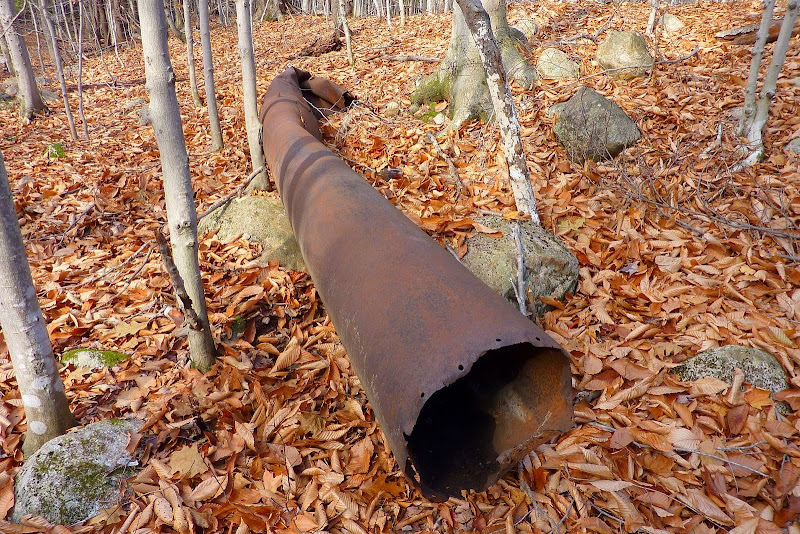1HappyHiker
Well-known member
Evilhanz, you raise an interesting possibility that the stack could have been attached to something other than a steam locomotive. Rather than go off in other directions, I wanted to keep this thread focused on the funnel-shaped object that I originally found. However, in light of your response I need to add another element to this thread.The close up of the interior of the funnel makes it pretty clear it's a spark arrestor. That was a device riveted to the smoke stack of a wood-fired steam engine. It was designed to circulate and break up the embers in order to reduce the chance of spot fires along the tracks and in the slash.The large diameter makes it unlikely that it was attached to a portable steam donkey as I originally thought, but that's not out of the question. One of the mills or the CCC camp could have used one with an arrestor that large.
On my return visit to obtain measurements and get some additional photos, I stumbled upon another object about 150 feet or so from the funnel shaped object. This other object is a metal tube that is 18 inches in diameter and about 20 feet long. (PHOTOS BELOW)


The photos and measurements of this tubular object were provided to the Clark family. They said that it definitely was not part of a steam locomotive. Their best guess was that it was most likely a smoke stack from a portable saw mill.
But, even with adding the long tubular object into the equation, perhaps this still leads to the same point made by the Clark family about forming your own conclusions.
There are so many possibilities. Perhaps the resourceful folks of the early 20th century took the discarded funnel-shaped stack (with the spark arrestor) and mounted it onto the long tubular object to form a smoke stack for a portable saw mill. Or perhaps these two objects were never "married". Maybe this spot in the woods was simply used as a dumping spot. Over the years, perhaps other smaller "dumped" parts have been scavenged, or disintegrated, or lay buried under the forest floor.
